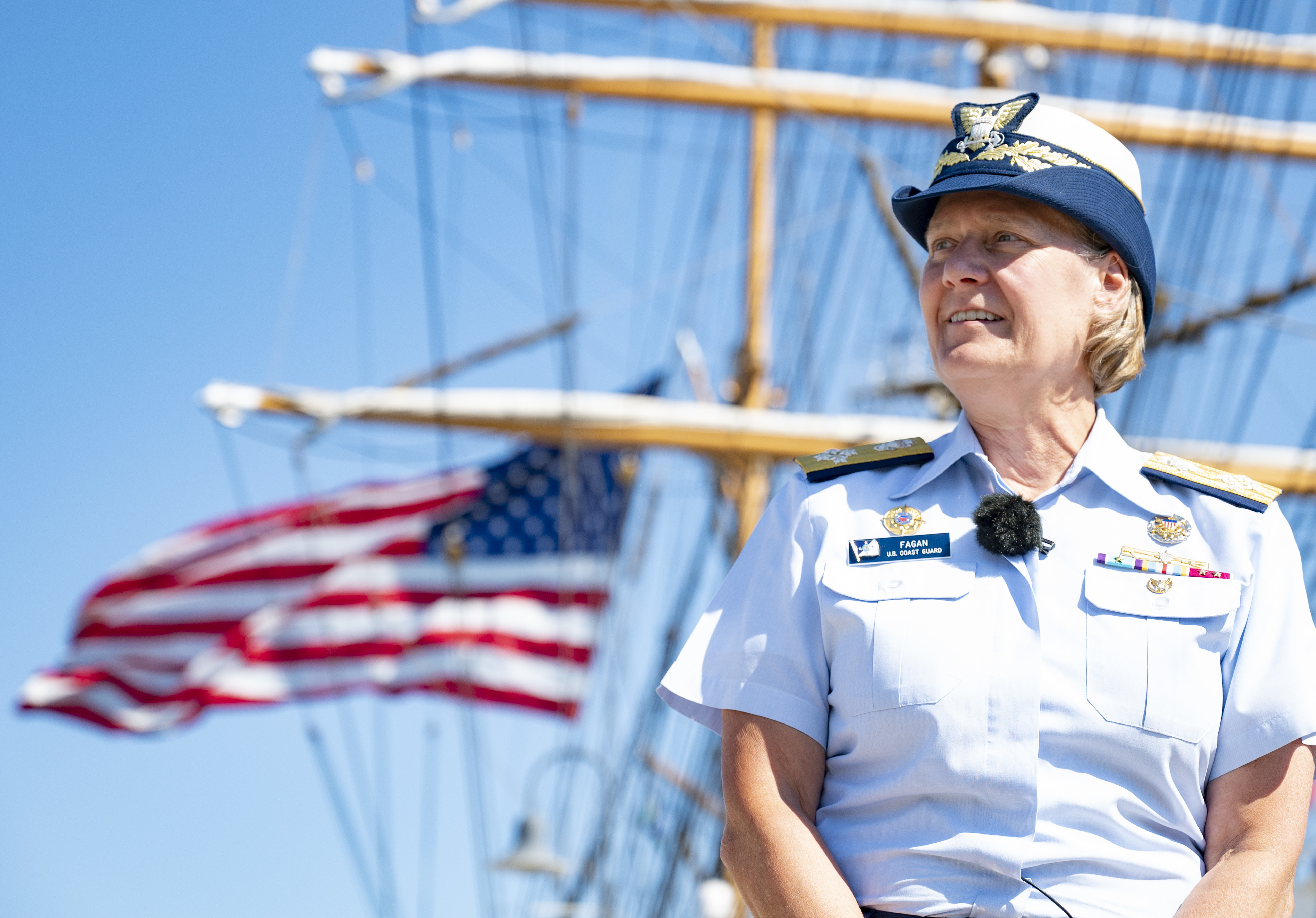
WASHINGTON, D.C., – The Coast Guard commandant has a message for the country – she’s hiring.
The Coast Guard is feeling an acute recruiting crunch across both officer and enlisted ranks, so reforming the service workforce is at the top of Adm. Linda Fagan’s agenda and the centerpiece of the Coast Guard’s latest strategy that rolled out in October.
“As we come out of COVID, there’s been a coming together of a number of different challenges that are creating the recruiting challenge that we are facing [not only] as a Coast Guard, but frankly with the entire U.S. workforce,” Fagan told USNI News in a Dec. 29 interview.
“In our case, it’s a shrinking propensity of people with an interest to serve. A shrinking group of people that physically qualify to serve, COVID [and] the workforce has strong feelings with regard to conditions of work. All that kind of coalesces into a recruiting challenge for the force.”
Since 2019, the Coast Guard has fallen short of its goals for getting new active-duty members. In 2022, the service recruited 2,793 service members out of a goal of 4,200. That’s a little over 66.5 percent of its annual objective.
With an active-duty total of about 42,000 – fewer than the 51,000 employees of the New York Police Department – the Coast Guard has little personnel margin to play with.
Much of the focus of the service in the last decade has been on its major acquisition programs – like the $10 billion, 25-hull Heritage-class Offshore Patrol Cutter program and the three-hull, $2.7 billion icebreaking Polar Security Cutter program. Now, with an acquisition path for its cutter fleet laid out for the foreseeable future, Fagan wants to put more attention on fixing recruiting.
“My predecessors have done the hard work to get the support that we need for the major acquisitions that we’ve got going on now … We’re on budget for them moving forward. The timelines aren’t in all cases what we’d hoped they would be, but we’re moving forward with clarity as an organization,” she said.
“That does free some of my time and commitment to focus on workforce. The reality is those acquisitions are interesting, but they do not contribute to the operational success of the organization without the people that we need to operate those assets.”
Making it Easier to Join
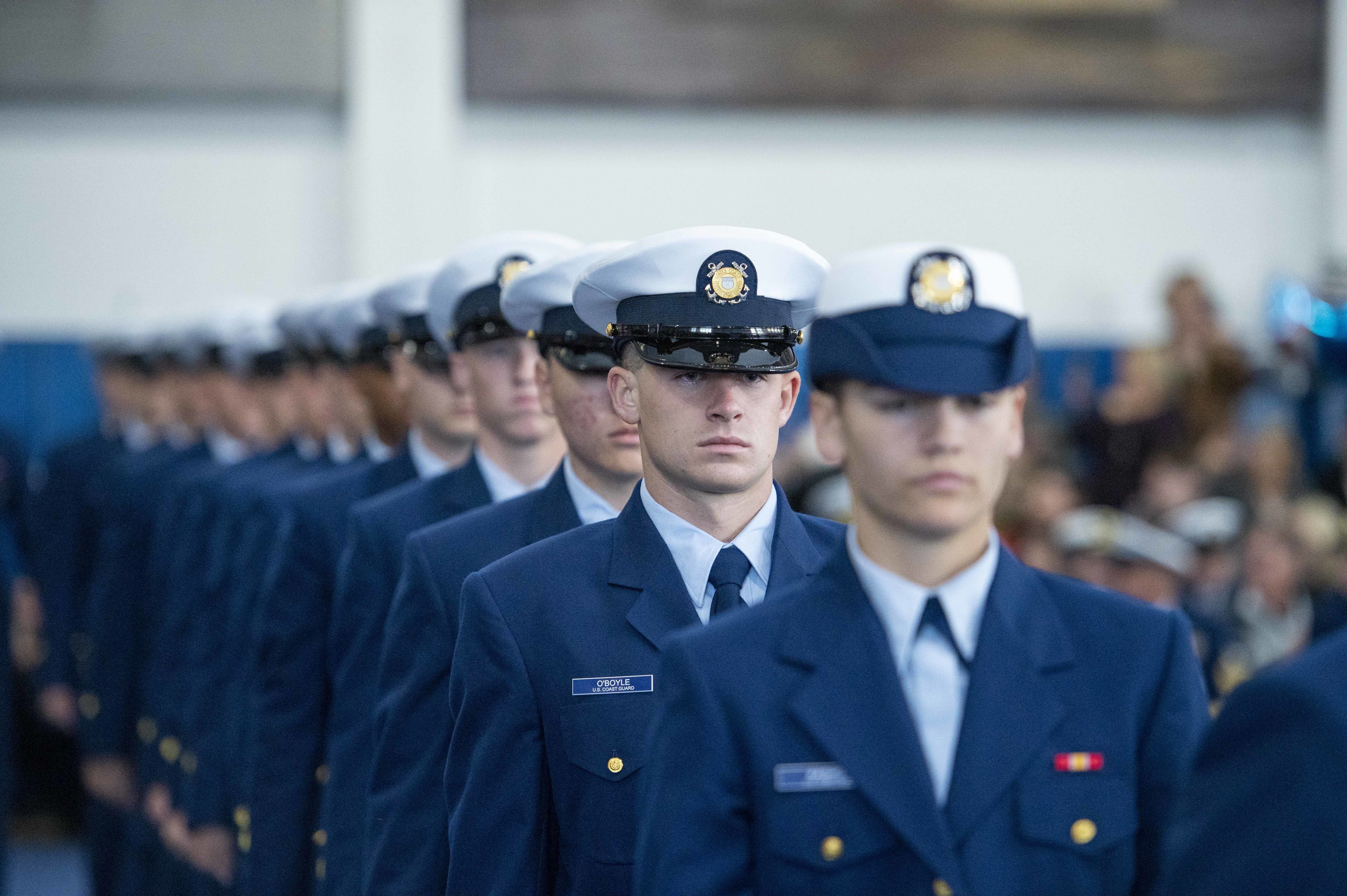
In 2022, the Navy raised the age of enlistment to 42 and eliminated its high-year tenure requirement. That was after the Coast Guard had already taken those steps to expand potential recruits and improve retention. Pentagon officials have closely monitored the Coast Guard’s push to make it easier to join the military.
A major barrier is the up-or-out system of the American military – those who don’t promote to the next rank are pushed out of the service, Fagan said.
“It’s quite rigid on the officer side, a little less rigid on the enlisted side. But still, the expectation is you’re going to come in, go to boot camp. We’ll send you down into the fleet for a year, a year and a half, then you’ll go to ‘A’ school, get your technical training and then start to move forward as a petty officer. That system does not serve us well,” Fagan said.
“We’re looking for opportunities to lateral people in. Let’s say you’re an aircraft mechanic, and you’re federally certified aircraft mechanic, taking that civilian credential and bringing you into the services as an E-4 or E-5 with a four-year contract right onto a hangar deck is an example of an opportunity we’re looking to create.”
For example, the service has experimented with a pilot program with both cooks and health services technicians to get experienced civilians into the service quickly.
“We’ve had good success out in [California] with medical petty officers and cooks. People have enlisted in the Coast Guard, they arrive out there to the ‘A’ school. In some cases, they’re paramedics, others, they’re credentialed from the Culinary Institute of America. The team is then assessing what skills they actually have. In some cases, they’ve got 75 or 80 percent of the skills that we would have taught them in an 18-week program. They customize a program of two to three weeks to get them current with Coast Guard policy, say around the medical rating, and work them in the clinic out there for two weeks and bam – they’re out in the fleet,” Fagan said.
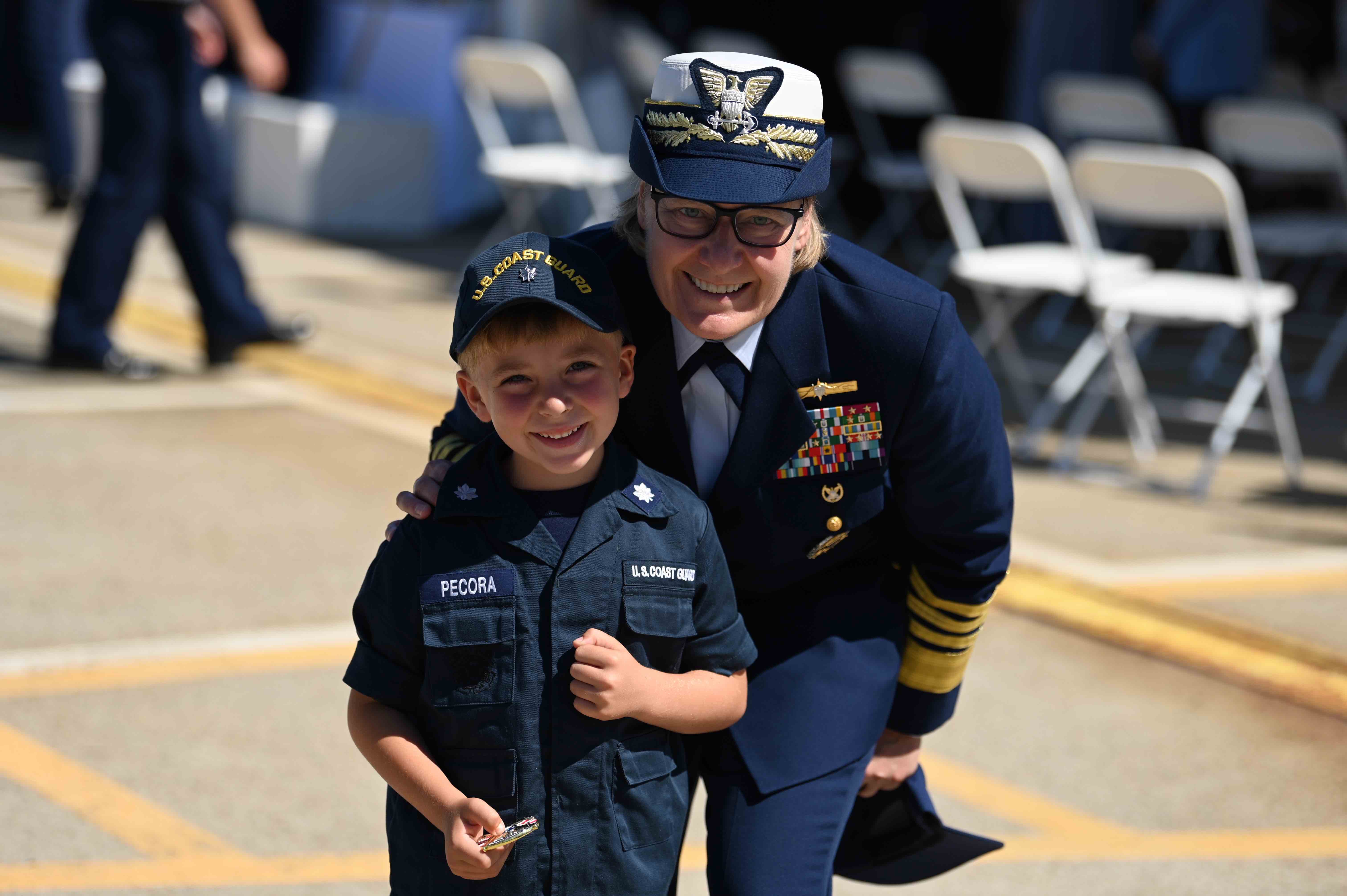
“Let’s acknowledge the experience in technical credentials that people may be joining the Coast Guard with, as a way to accelerate that expertise into the petty officer ranks and into the technical ranks that we need. How much of that do we do? I don’t know the answer. I tell the team we’re not going to 100 percent lateral everybody in but we’re not going to stay at zero. We’re piloting that and stepping forward as a way to just increase opportunity for individuals who see themselves serving,” she said.
Following a RAND study that resulted in changes like expanding childcare options and making it easier for women to serve on smaller cutters, Fagan has tasked the service with looking for other ways to eliminate barriers to staying in the service.
“Whether it’s that you’re forced to move every three to four years, this up or out system, assumptions around assignments and what a successful career looks like… We’re unpacking a lot of that,” she said.
“Eliminating barriers is just good for the workforce. It makes it easier for everyone to serve honorably and support their families. We recruit an individual, we retain families.”
Acquisition
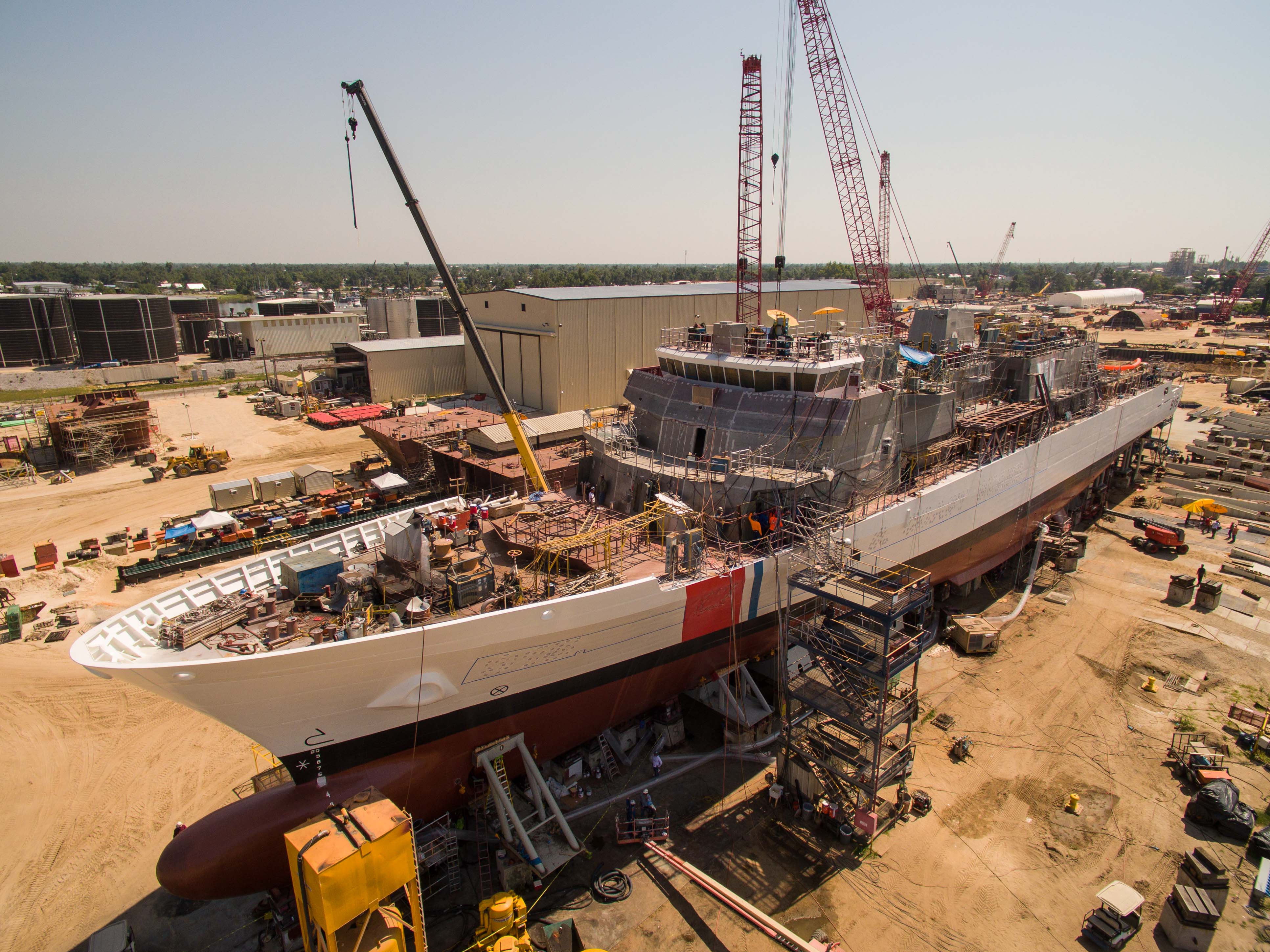
The service’s two highest-priority acquisitions are progressing along in the Gulf Coast. The first OPC Argus (WMSM-915) is under construction at Eastern Shipbuilding in Panama City, Fla., with three more planned from the yard. The service awarded a second phase contract to Austal USA in Mobile, Ala., to build the fifth through 10th OPCs, a decision that prompted a lawsuit from Eastern. Fagan didn’t address the ongoing legal tussle but praised the program.
“Having been down to visit Argus at Eastern, it is an exceptional ship, the quality of the workmanship. We’re really excited about bringing those into the fleet. The ships that they’re replacing the [Medium Endurance Cutters] are 50 plus years old,” she said.
Fagan stressed the importance of nailing the design for the Polar Security Cutter under construction at Bollinger Mississippi Shipbuilding — the former Halter Marine Shipyard — in Pascagoula.
“The key to successful shipbuilding is don’t get ahead of your detailed design. We’re working hard to get there so that we can start cutting big pieces of thick steel and putting the ship together. These are super complex ships,” she told USNI News after producing two thick slugs of hardened steel stacked six inches high to illustrate the thickness of an ice breaker’s hull.
“For OPC it takes 17 units to put that ship together. This ship will be 85 units, which just speaks to the density and complexity [of the cutter].”
In terms of aviation, the service is moving to phase out its fleet of MH-65 Dolphin helicopters – which entered the service in 1985 – in favor of a fleet of MH-60 Jayhawk helicopters based on the same airframe used by both the Army and Navy.
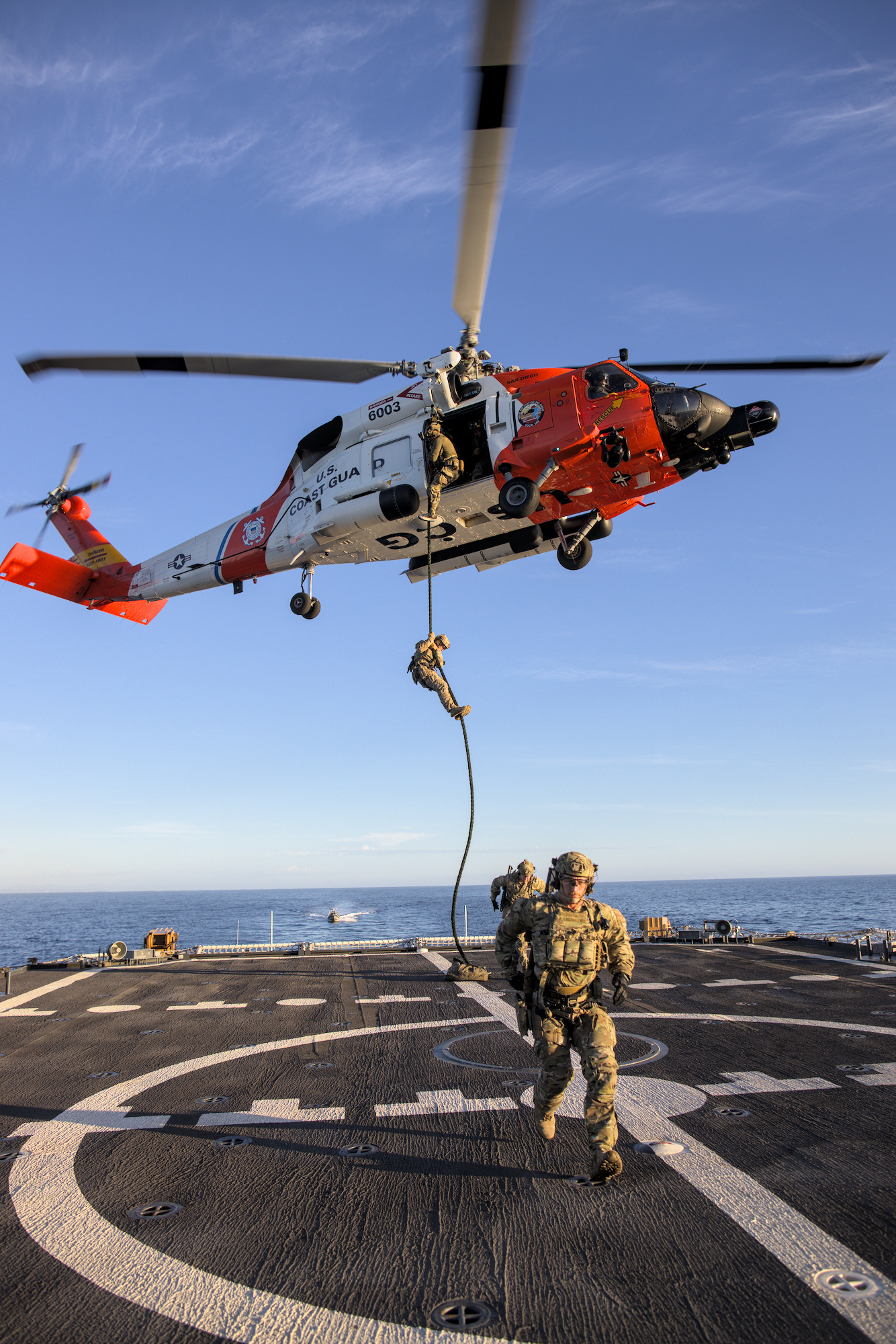
“We are accelerating into a single fleet of H-60s. It’s interesting, I was down at our aviation logistics center in Elizabeth City, seeing what we’re doing to ensure that those [H-65s] continue to stay airworthy and safe, as they were operating those longer than any, any other service has,” Fagan said.
“It is impressive, the work that they’re doing to ensure the airworthiness of the 65. But the vision for the future is a single fleet of tail-fold, blade-fold 60s, so shipboard capable. The 60s just have got much longer range and more lift. That’s really right now what we’re focused on in our rotary wing fleet.”
The Coast Guard has used unmanned platforms like ScanEagle aboard its cutters and is considering future applications. But more importantly, Fagan wants to better use the data the service has already collected as part of the competitive edge tenant in the latest service strategy.

“We’re sitting on tons and tons of data, but it’s not warehoused in a way that’s particularly useful for us to use AI, use machine learning for us to understand that. ‘Hey, here’s a blind spot. and this is a sensor and an unmanned system that would fill that for us.’ We’re working with a sense of urgency to get after the governance in the warehousing of data so we can begin to take advantage of the data we’ve already got. And then that will help us with the clarity on unmanned systems,” she said.
“For me, the success looks like you’ve gotten to the point where you’ve got predictive analytics in place … that you understand – having run through 20 years of counternarcotics seizures in the Eastern Pacific – what time of day, what time of the month and where you’re most likely to find the next low-profile [narcotics] vessel … It’s kind of the unfun behind-the-scenes work, but it’s critical so that we can begin to illuminate some of the rest of that.”
International Operations
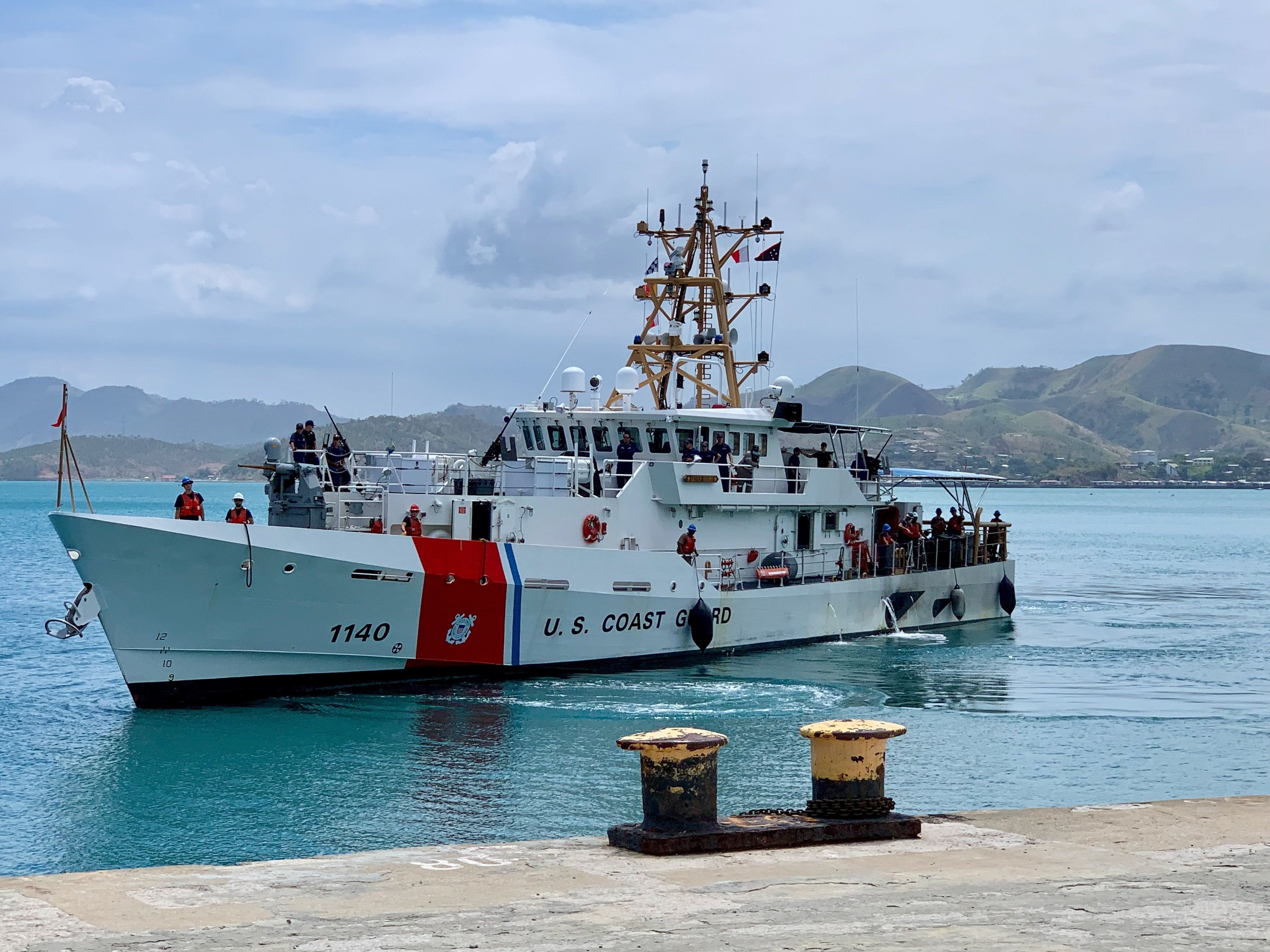
In addition to its enduring counter-narcotics operations in U.S. Southern Command, the Coast Guard has been expanding operations in the Western Pacific largely through deployments of its Legend-class National Security Cutter fleet and in the Middle East with six Fast Response Cutters based in Bahrain, co-located with the U.S. Navy’s 5th Fleet.
In U.S. Central Command, the Coast Guard was initially slated to help provide protection for two Iraqi oil terminals in the west part of the Persian Gulf 20 years ago, but those missions have expanded.
“There are now six Fast Response Cutters in Bahrain. They’re 154 feet [long], incredibly capable, state-of-the-art [and] technically sophisticated… There’s something much more than the patrol boat that they replaced, but they are not a medium endurance cutter,” Fagan said.
“That is a challenging part of the world with regard to the many neighboring countries there. We’ve had some weapons interdictions. We’ve had some counter-narcotics interdictions and we continue to make sure that those crews are ready, working in support of the fleet commander.”
In the Pacific, the Coast Guard is expanding partnerships with island nations to help provide support to contest illegal, unregulated and unreported (IUU) fishing.
“At its most basic, it’s theft of natural resources. It is nation-state actors taking advantage of a state’s inability to protect their own sovereignty,” she said.
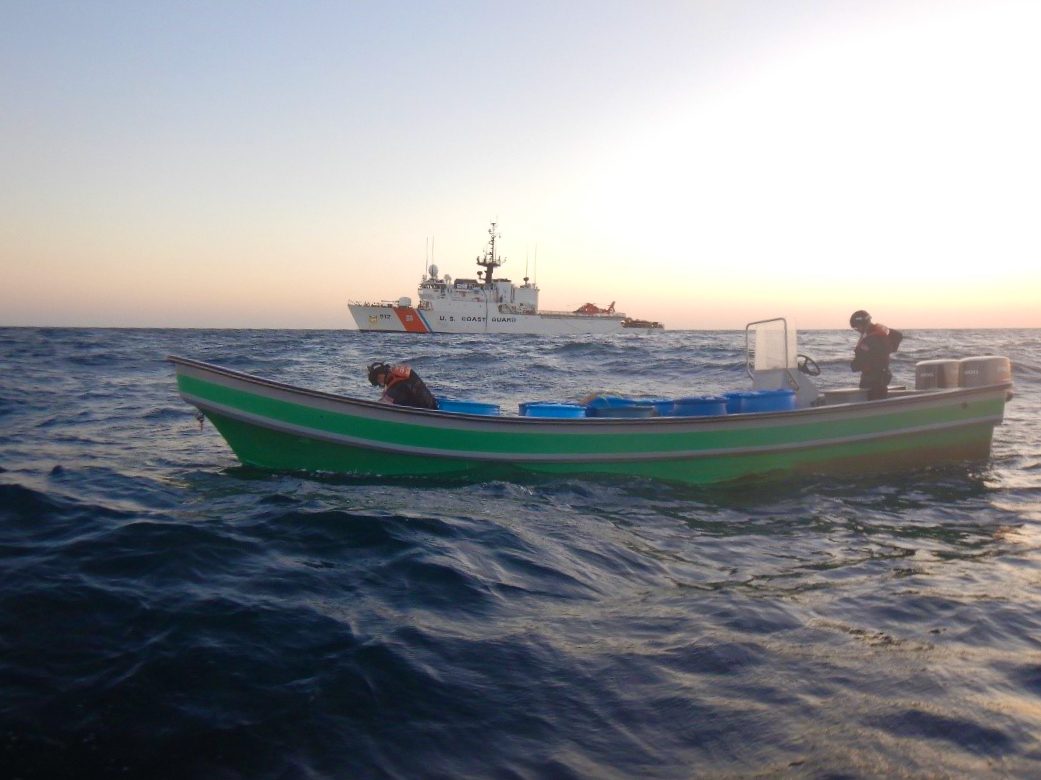
In one example from 2021, a National Security Cutter took on a local official from Fiji that gave the cutter the authority to interdict illegal fishing in their territorial waters.
“As it pertains to IUU fishing, we provide the platform and the access and the ride. They bring their authorities on board,” she said.
“It’s just a nice way to sort of package authority and capabilities.”
The Coast Guard is looking at more agreements to take on ship riders in the Pacific to expand the legal authority to interdict illegal activity.
The service has cutters based in Hawaii and Guam and is studying expanding that footprint to other areas.
“We are a global Coast Guard and how do you force posture to ensure that you’re in the right areas, that you’re able to support the crews that you have and you’re providing relevance and support,” she said.
“Those are all healthy, ongoing conversations.”
Getting the Word Out
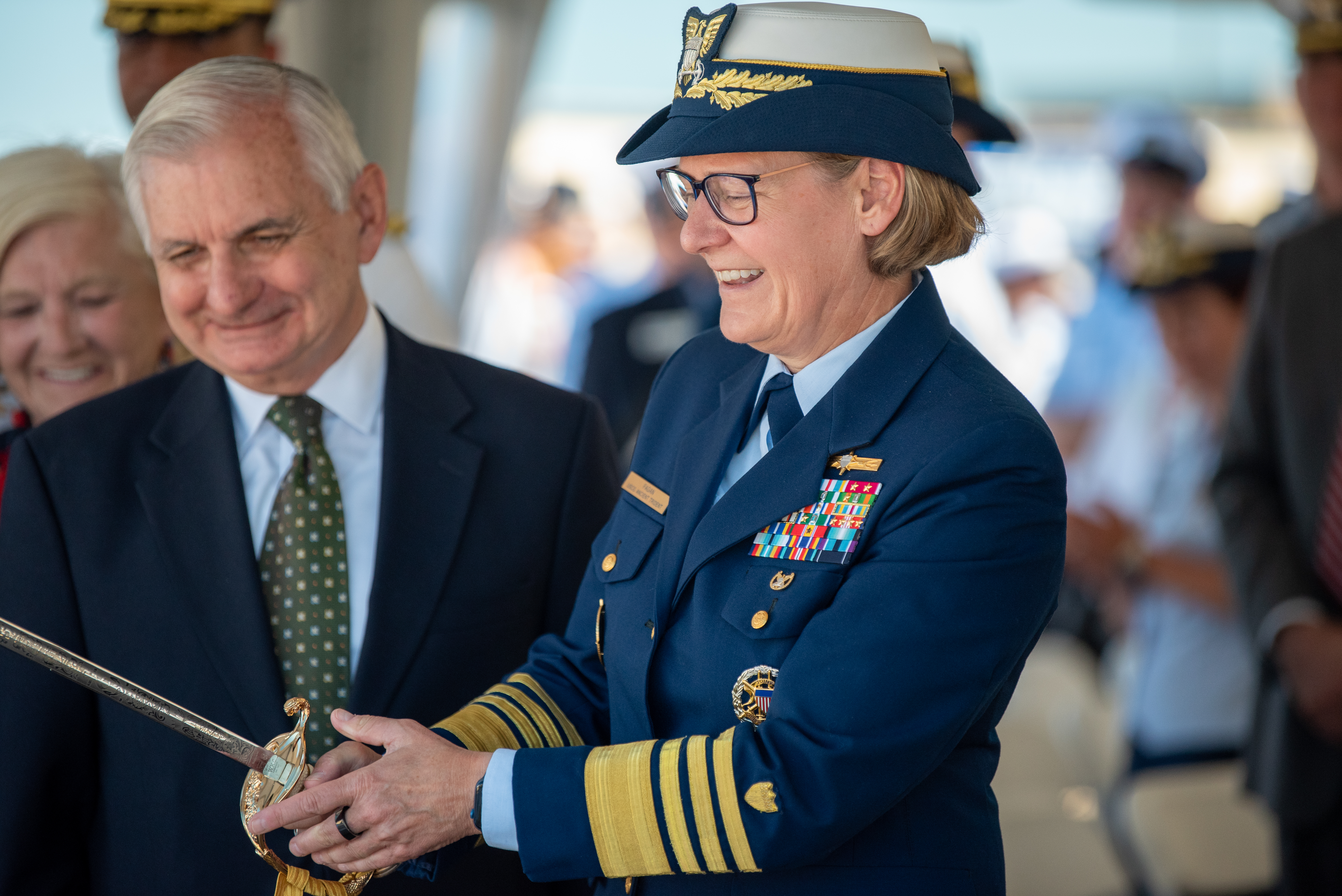
With a portfolio that touches a myriad of realms, high among concerns with leadership is simply explaining the Coast Guard to future service members, Fagan said.
“One of the big challenges we have as a service is people don’t know who we are. If you live along the East Coast of the United States – I grew up in the Boston area – the Coast Guard is everywhere. If you’re a boater you see us everywhere. If you live down in Florida and the Gulf Coast of the U.S., you know what we do for hurricane response. You’re a fisherman in Alaska, you know who we are. There are pockets in the country where the Coast Guard is well-known and understood by the population,” Fagan said.
“But there’s a much broader group of Americans out there that don’t understand who the Coast Guard is.”
While it’s a military service, the Coast Guard falls under the Department of Homeland Security and has a complex role as a search and rescue service, a regulatory agency and a law enforcement entity that makes it difficult to explain even to Fagan’s peers in the Pentagon and the geographical combatant commands what the service does.
“We’re also talking about what does the marketing strategy look like to help people understand, ‘hey, this is how the Coast Guard contributes to your overall well-being, your economic prosperity, your national security and some of the mission space that we do.’ That’s not just counter-narcotics. That’s not just search and rescue’,” Fagan said.
The service is now rethinking how it will sell itself to potential recruits as it retools its marketing plan, Fagan said.
“I’d end with ‘Hey, we’re hiring’,” she said.





